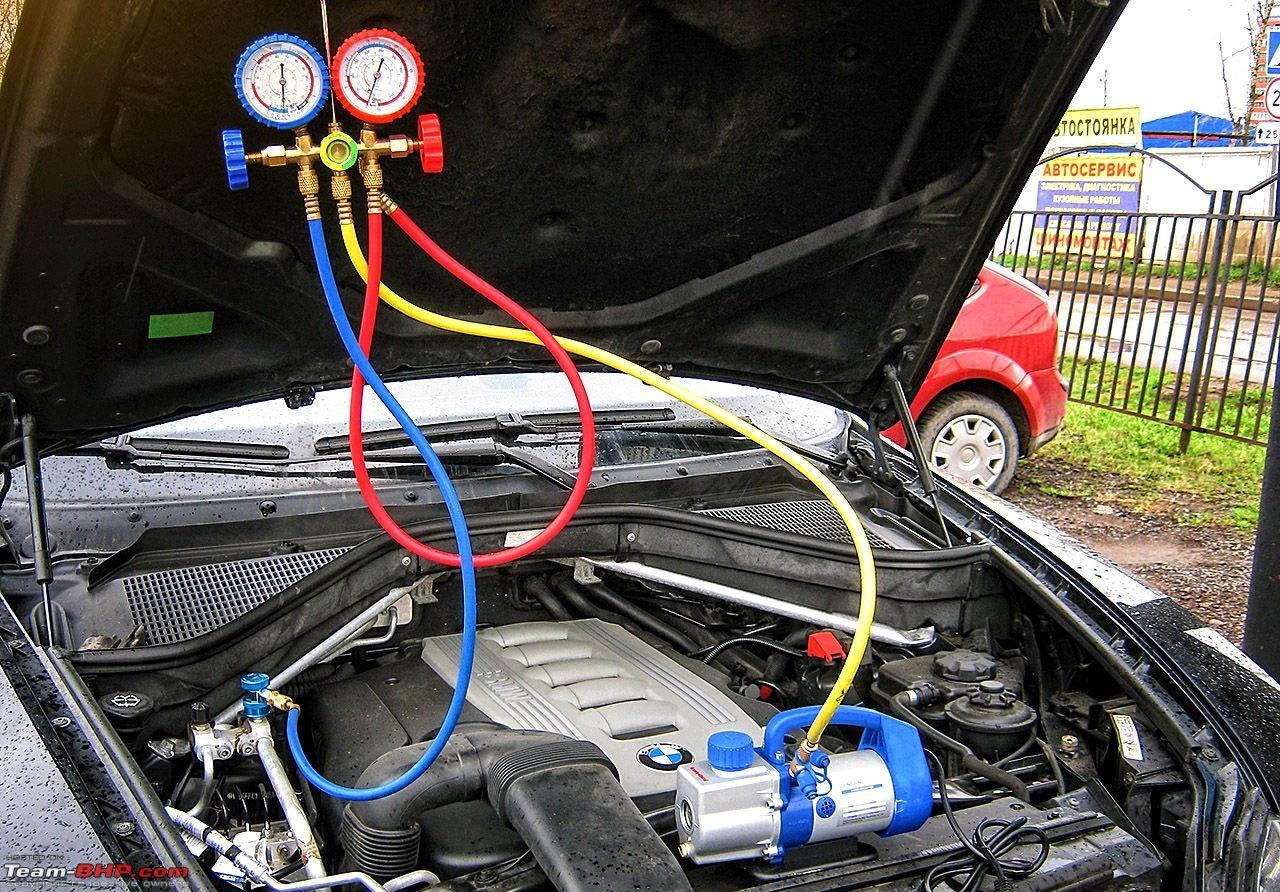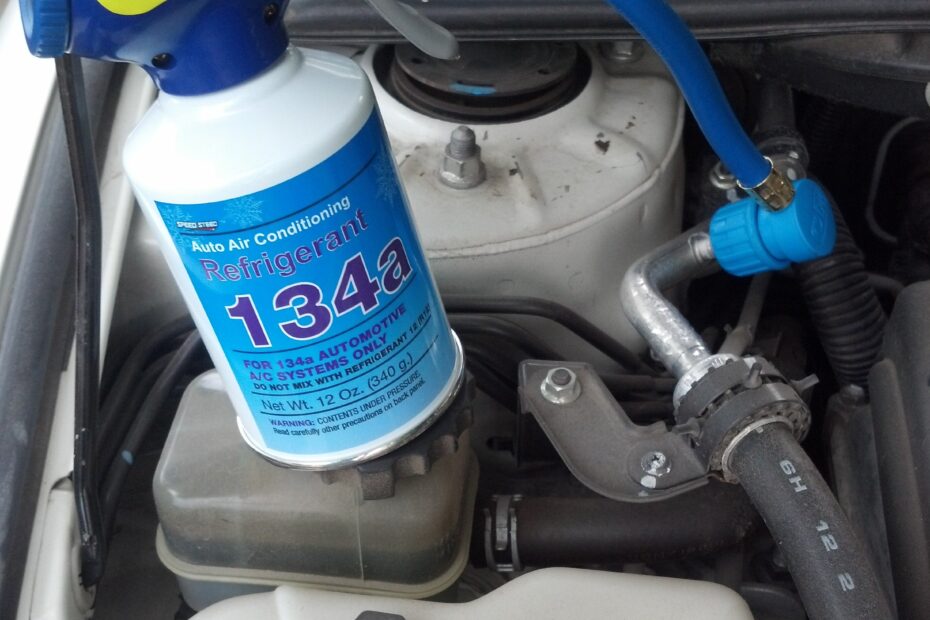To check freon in your car, follow these steps: locate the low-pressure port, attach the gauge, and read the pressure level. Checking the freon level in your car ensures optimal cooling efficiency and helps prevent damage to the AC system.
Is your car’s air conditioning not cooling as well as it used to? It may be due to low freon levels. Freon, also known as refrigerant, is responsible for cooling the air in your vehicle’s AC system. Over time, freon can gradually leak out, resulting in decreased cooling performance.
To ensure your car’s AC is functioning properly, it’s important to regularly check the freon level. In this guide, we’ll walk you through the steps of how to check freon in your car to keep your AC running smoothly.
Why Freon Levels Matter
Checking the freon levels in your car’s air conditioning system is crucial for maintaining a comfortable driving environment. Adequate freon levels are essential for ensuring that your car’s air conditioning system functions efficiently, especially during hot weather. Inadequate freon levels can lead to compromised cooling performance, and it is important to understand the impact of low freon levels on both the air conditioning system and overall car performance.
Impact On Air Conditioning
Low freon levels can result in insufficient cooling, causing the air conditioning system to blow warm or mildly cool air. When freon levels are low, the system may struggle to maintain a consistent temperature inside the car, leading to discomfort for the passengers. This can be particularly problematic during the sweltering summer months when a properly functioning air conditioning system is essential for a pleasant driving experience.
Effects On Car Performance
In addition to affecting air conditioning performance, low freon levels can also impact the overall performance of the car. When the air conditioning system is forced to operate with insufficient freon, the compressor may experience increased strain, potentially leading to premature wear and decreased efficiency. Furthermore, inadequate freon levels can result in decreased fuel efficiency, as the air conditioning system requires more energy to produce the desired level of cooling. This, in turn, can lead to increased fuel consumption and higher running costs.

Credit: www.team-bhp.com
Signs Of Low Freon Levels
Low levels of Freon can affect the performance of your car’s air conditioning system. It’s important to be aware of the signs that indicate low Freon levels, so you can take the necessary steps to address the issue. Here are two key indicators that your car’s Freon levels may be low:
Weak Airflow
If you notice weak airflow coming out of your car’s vents when you turn on the air conditioning, it could be an indication of low Freon levels. Freon acts as a cooling agent in the air conditioning system, and when there isn’t enough of it, the system may not be able to generate strong airflow. Instead, you may experience a weak, feeble breeze that doesn’t effectively cool down the interior of your car.
Warmer Air Temperature
Another sign of low Freon levels is when the air being blown out by the air conditioning system is warmer than expected. Normally, the air conditioning system cools down the air before it is blown into the cabin, but with low levels of Freon, the cooling process may not be as effective. As a result, you may notice that the air being blown out is not as cool as it should be. This can be particularly noticeable on hot days when you rely on your air conditioning to provide relief from the heat.
If you experience weak airflow or warmer air temperature when you turn on your car’s air conditioning, it’s a good idea to have your Freon levels checked. This can help identify any issues with the air conditioning system and allow for timely repairs. Remember, a well-functioning air conditioning system can make your driving experience much more comfortable, especially during those hot summer months.
Steps To Check Freon Levels
Checking the freon levels in your car’s air conditioning system is essential to ensure optimal cooling performance. By following a few simple steps, you can determine if your freon levels are sufficient or if they need to be recharged. Let’s dive into each step:
1. Locate Low-pressure Port
The first step is to locate the low-pressure port on your car’s air conditioning system. This port is usually located on the larger diameter aluminum tubing of the AC system. It is commonly marked with an “L” or labeled as the low-pressure port. Refer to your car’s user manual or consult online resources to find the exact location of this port for your specific car model. Make sure the engine is off and the car is in a well-ventilated area before you begin.
2. Attach Gauge And Read Pressure
Once you have located the low-pressure port, it’s time to attach a pressure gauge. Connect the gauge to the port, ensuring a snug fit. The gauge gives you a precise reading of the system’s freon pressure. With the engine off, observe the pressure reading on the gauge. It is important to note that optimal pressure levels vary depending on the car model and ambient conditions. Refer to your car’s user manual or consult a trusted mechanic to determine the ideal pressure range for your specific AC system.
After attaching the gauge and noting the pressure reading, compare it to the recommended range for your vehicle. If the pressure falls below the recommended range, it may indicate a freon leak or a need for a recharge. On the other hand, if the pressure exceeds the recommended range, it could indicate an overcharged system. In both cases, seeking professional assistance is advised to ensure the proper functioning of your car’s AC system.
Regularly checking your car’s freon levels is crucial to maintaining a cool and comfortable ride, especially during hot summer months. By following these steps, you can easily determine if your freon levels need attention and take the necessary steps to rectify any issues.

Credit: knowhow.napaonline.com
Interpreting Freon Readings
Checking the Freon levels in your car’s air conditioning system is essential for maintaining optimal cooling performance. Understanding how to interpret Freon readings can help you identify any issues that may affect the efficiency of your car’s AC system. Read on to learn about the key indicators of refrigerant pressure and leakage.
Normal Vs. Low Pressure
When assessing Freon levels, it’s crucial to distinguish between normal and low pressure readings. Normal pressure typically falls within the range of 25 to 45 psi (pounds per square inch) for the low-pressure side and 200 to 250 psi for the high-pressure side. Low pressure, on the other hand, may indicate a refrigerant shortage which can lead to reduced cooling capacity.
Indications Of Leakage
- Higher than normal low-side pressure
- Presence of oil stains or wet spots around AC components
- Audible hissing sounds when the AC is running
These signs suggest potential leakage within the AC system. Identifying and addressing leaks promptly is crucial to prevent further damage and ensure the efficient operation of your car’s AC.
When To Refill Or Recharge
Checking the Freon level in your car is important for maintaining optimal performance of your air conditioning system. Knowing when to refill or recharge your system can help keep you cool on the road.
Consulting A Professional
If you are unsure about the Freon level in your car or suspect a leak, it’s best to consult a qualified professional. They can accurately assess the situation and perform any necessary repairs or recharges.
Diy Refilling Tips
For those comfortable with DIY tasks, here are a few tips to help you check and refill Freon in your car:
- Use a Freon gauge to measure the pressure in the system.
- If the pressure is low, locate the service port on your car’s air conditioning system.
- Connect a Freon canister to the service port and slowly add refrigerant.
- Monitor the pressure as you refill to avoid overcharging the system.
- Once the pressure is in the optimal range, disconnect the canister and securely close the service port.

Credit: www.instructables.com
Frequently Asked Questions On How To Check Freon In Car
How Can You Tell If A Car Is Low On Freon?
Check for weak cool air, acrid odors, or visible leaks to detect low Freon in a car.
Can I Check My Own Freon In My Car?
Yes, you can check the Freon in your car, but it’s best to have a professional handle it for safety and accuracy.
How Do I Know If My Car Needs Freon Recharge?
To determine if your car needs a Freon recharge, look for signs such as diminished cooling, weak airflow from the vents, or the air conditioning system not blowing cold air. If you notice any of these issues, it’s best to visit a professional mechanic for an evaluation and potential Freon recharge.
How Do I Check My Ac Freon Level?
To check your AC Freon level, follow these steps: 1. Turn off the AC and let it cool down for about 30 minutes. 2. Locate the AC’s service ports, usually found near the compressor. 3. Attach a pressure gauge to the low-side service port.
4. Start the AC and observe the pressure reading on the gauge. 5. Compare the reading with the manufacturer’s specifications to determine if the Freon level is correct.
What Are Signs Of Low Freon In A Car?
Low cooling, strange noises, warm air blowing are indicators of low Freon levels.
Can I Check Freon In My Car Myself?
Yes, with a gauge and following safety guidelines, you can check Freon levels.
How Do I Identify A Freon Leak?
Inspect for oily residue, listen for hissing noises, and check for cool airflow changes.
Conclusion
Checking your car’s Freon is an essential part of regular maintenance. By following these simple steps, you can ensure the proper functioning of your car’s AC system, increasing its efficiency and lifespan. Regular maintenance will help you avoid costly repairs and keep you comfortable on the road.
Keep your car running smoothly and enjoy the cool breeze all summer.
- How Much Does a Ford 9N Tractor Weigh - May 20, 2024
- How Many of My Exact Car were Made: Uncovering the Rarity - May 20, 2024
- How to Find Out What Someone Drives: Discover the Truth - May 20, 2024



